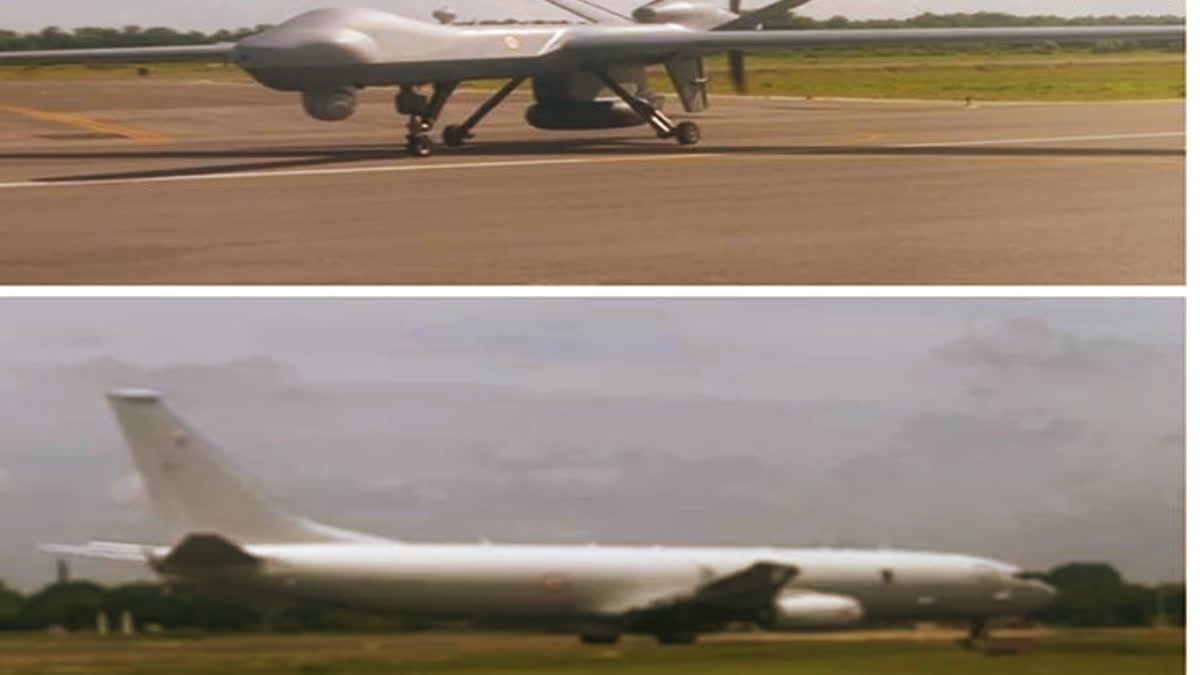New Delhi: India is looking at sealing a landmark deal to procure 31 MQ-9B Predator long-endurance armed drones from the US under a government-to-government framework by March with the US Congress expected to clear the supplies in the next few weeks, people familiar with the matter said.
American and Indian government officials will hold the final series of negotiations on the procurement after Washington responds to India's Letter of Request (LoR) for the acquisition of drones from US defence major General Atomics (GA), they said. India is procuring the long-endurance 'hunter-killer' drones to crank up the surveillance apparatus of the armed forces, especially along the Line of Actual Control (LAC) with China.
Though the price of the drones will be finalised in the negotiation process, it is estimated that the procurement would cost around USD 3 billion. The people cited above said New Delhi and Washington will depute their respective teams to firm up the deal including finalising the cost and other nitty-gritties.
The aim is to seal the deal by March next year, they said. As part of the laid down process, the agreement will be between the Indian government and American authorities and the Pentagon will convey to General Atomics about the requirement of the Indian armed forces, they added. It is understood that the issue of India's proposed procurement of the drones figured in US Defence Secretary Lloyd J Austin's talks with his Indian counterpart Rajnath Singh in Delhi earlier this month.
Asked at a media briefing as to when the procurement will be finalised, Austin said it will be announced at the right time. "Well, again, you know, we've -- at the right time, we'll announce the (deal). I think the government, the officials in the government are doing everything necessary to make sure that that capability ... you (India) get that capability as quickly as possible," he said.
The Defence Acquisition Council headed by Singh on June 15 accorded the Acceptance of Necessity (AoN) or initial approval for the acquisition of 31 MQ-9B drones from the US under the foreign military sale (FMS) route. In June, both sides also reached an agreement under which American aerospace major General Electric will partner with Hindustan Aeronautics Ltd to produce jet engines for Indian military aircraft in India.
The Sea Guardian drones are being procured for the three services as they can carry out a variety of roles including maritime surveillance, anti-submarine warfare and over-the-horizon targeting. While the Navy will get 15 Sea Guardian drones, the Indian Air Force and the Army will each get eight Sky Guardian drones. The high-altitude long-endurance drones are capable of remaining airborne for over 35 hours and can carry four Hellfire missiles and around 450 kgs of bombs.
In 2020, the Indian Navy had taken on lease two MQ-9B Sea Guardian drones from General Atomics for one year for surveillance in the Indian Ocean. The lease period has been extended subsequently. In their over 50-minute talks on the sidelines of the G20 summit in Delhi, Prime Minister Narendra Modi and US President Joe Biden vowed to "deepen and diversify" the bilateral major defence partnership while welcoming forward movement in India's procurement of 31 drones and joint development of jet engines.
The India-US defence cooperation has been on an upswing in the last few years. In June 2016, the US designated India a "Major Defence Partner" paving the way for sharing of critical military equipment and technology. The two countries have also inked key defence and security pacts over the past few years, including the Logistics Exchange Memorandum of Agreement (LEMOA) in 2016 that allows their militaries to use each other's bases for repair and replenishment of supplies.
The two sides also signed COMCASA (Communications Compatibility and Security Agreement) in 2018 which provides for interoperability between the two militaries and the sale of high-end technology from the US to India. In October 2020, India and the US sealed the BECA (Basic Exchange and Cooperation Agreement) agreement to further boost bilateral defence ties. The pact provides for the sharing of high-end military technology, logistics and geospatial maps between the two countries.



